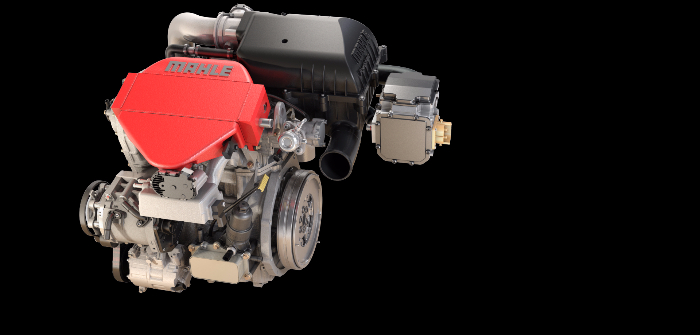Global engine development and consultancy Mahle Powertrain has updated its downsized eSupercharged 48V engine, which is installed in to the company’s latest demonstrator vehicle.
With the introduction of the both the Worldwide Harmonised Light Vehicle Test Procedure (WLTP) and Real Driving Emissions (RDE) testing on the horizon, Mahle Powertrain has created a small capacity, high output engine that produces good fuel consumption figures, whilst achieving emissions compliance. As the first independent powertrain consultancy to achieve VCA approval for its real-world RDE routes, Mahle states it is in a strong position to comment on the complexities of achieving vehicle approval from this perspective.
The VW Golf GTi-based demonstrator, originally fitted with a 2.0 litre turbocharged engine, now has an optimised, eSupercharged version of the Northampton-based company’s 1.2 litre Mahle DI-3 engine. The three-cylinder unit produces 160 kW/litre and 35 bar BMEP, and provides a significant fuel saving compared to the baseline 2.0 litre engine. The engine is also equipped with Mahle’s Flexible ECU (MFE); a development control unit, including software, that allows extremely rapid and flexible functional integration and comprehensive implementation of processes from the first prototype to series production.
Supporting this is a 48V mild-hybrid electrical architecture, to take advantage of the emerging trend of utilising higher voltages across the powertrain; crucial to supplying the eSupercharger with sufficient electrical power and also providing further fuel savings.
“With the new test procedures coming into force, getting the most efficient performance possible out of downsized engines over a wide operating range is the key challenge over the coming years, as OEMs seek to meet forthcoming vehicle CO2 targets,” explained Mike Bassett, chief engineer at Mahle Powertrain. “48V mild-hybridisation is very likely to be a key technology which is widely adopted to help achieve these targets.
“Our work testing these engines provides vehicle manufacturers with valuable performance data on this new generation of hybrids, which we expect to see on European roads within the next few years.”


